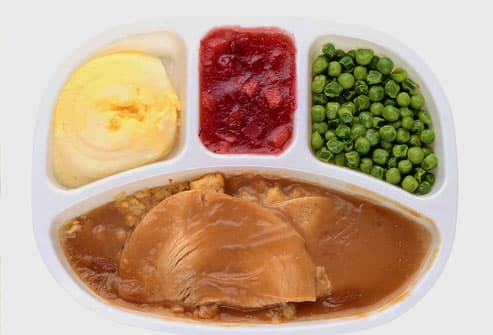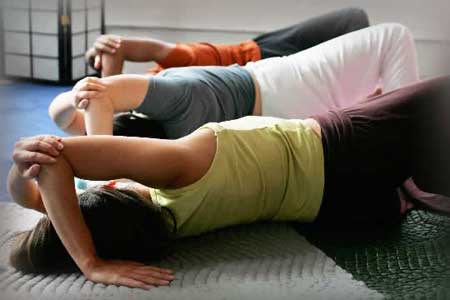
Debate about BPA, a common chemical in some plastic food and drink containers, is heating up after the U.S. Food and Drug Administration said Friday that it will fund $30 million worth of research on the substance given its possible developmental harm to infants.
A U.K. study offers further fuel to the fire, suggesting that BPA, or Bisphenol A, may be harmful to cardiac health in adults as well, although some health and medical experts question the findings.
"While the study is being put forward as more proof that BPA causes heart disease ... there are many problems with [it]," said Dr. Richard Besser, senior health and medical editor for ABC News.
The FDA is working on new guidance on BPA in light of growing evidence of its danger to infants but, he said, as far as the harmful effects of BPA on heart health, the study suffers from several design flaws that cast doubt on its findings.
Bisphenol A is a chemical additive found in many products, from bulletproof glass to plastic water jugs to the lining of soda cans. Put into widespread use in the 1950s, BPA aids in producing lightweight, shatter-resistance and heat-resistant plastics.
In recent years, the debate about BPA has focused on the harmful effects that BPA-laden baby bottles and 'sippy' cups might have on infant development. New research suggests, however, that BPA exposure may be a health hazard for adults as well.
Bisphenol A is a chemical additive found in many products, from bulletproof glass to plastic water jugs to the lining of soda cans. Put into widespread use in the 1950s, BPA aids in producing lightweight, shatter-resistance and heat-resistant plastics.
In recent years, the debate about BPA has focused on the harmful effects that BPA-laden baby bottles and 'sippy' cups might have on infant development. New research suggests, however, that BPA exposure may be a health hazard for adults as well.
The study, published last week by the Public Library of Science, draws on health data from the 2005-2006 National Health and Nutrition Examination Survey and finds that people with high levels of BPA in their urine are at significantly higher risk for coronary heart disease.
Researchers note that the study confirms their preliminary findings concerning heart disease and BPA, which also found a connection between heart disease and BPA in a similarly-designed 2008 study.
The link between BPA and heart disease found in Tuesday's study, however, was weaker than the one found in 2008, and other BPA health risks found in 2008, such as a diabetes and liver disease, were not supported by the more recent data.
The Link Between BPA and Your Health
Dr. Michele Marcus, chair of the Department of Epidemiology at Emory University, said that while the study does suggest some association between BPA and heart disease, "it's not clear whether the association is due to BPA or something else related to BPA."
For example, she said, people can be exposed to BPA from drinking canned soda, so the observed increased risk of heart disease could be linked to BPA directly or could be more closely linked to consuming soda itself.
Besser said that because the BPA test used by researchers can only detect recent BPA exposure, the study cannot speak to the effect of chronic exposure to BPA during a lifetime; an important but unknown variable.
This is not to say that a link between heart disease and BPA doesn't exist, experts cautioned, only that it requires further research to confirm.
Even so, some experts said the evidence still suggests that BPA is toxic for adults and children alike, pointing to a "smoking gun for BPA exposure," as Dele Ogunseitan, director of the Program in Public Health at the University of California, Irvine, put it.
"We are entering a new era of risk-factor discovery, where focus is on finding toxic chemicals in the environment that act as triggers for heart disease," said Dr. Philip Landrigan, chairman of the Department of Preventive Medicine at Mount Sinai Medical Center in New York City.
The findings are significant because "heart disease is responsible each year for 630,000 deaths, according to the CDC, [so] any factor that is responsible for even a small fraction of these cardiovascular deaths will be responsible for a large number of deaths," he said.
Dr. Fred vom Saal, professor of biological sciences at the University of Missouri-Columbia, said, "This is a big deal. Because it is possible to do something about this factor; reduce exposure to BPA by altering its use."
Will the FDA Tighten Up BPA Standards
The danger of putting BPA in baby products such as bottles, 'sippy' cups and baby-formula containers has garnered much attention in past years.
BPA is known to mimic the effects of estrogen in the body and research finds that it may have detrimental effects on brain and reproductive development when the baby is in the womb and as an infant.
In response to the research, some states and manufacturers have banned its use in baby products.
In March 2009, six major manufactures agreed to eliminate BPA from baby bottles.
Connecticut became the first state to ban BPA from infant formula and baby food containers in June 2009, and Minnesota has since followed suit with a ban that went in to effect Jan. 1, 2010, prohibiting the use of BPA in 'sippy' cup and baby bottles.
Although the potential risks associated with putting BPA in water bottles, soda and soup liners, and other plastic containers commonly used to hold our food and beverages has recently become a topic of debate, the FDA has yet to change safety regulations on the chemical.
After an independent FDA panel in October 2008 found that the agency's position on BPA was scientifically flawed, the FDA, with the support of the American Chemistry Council, entered discussions on a possible change in its stance on BPA.
In a news conference Friday, they announced that they now share the perspective of the National Toxicology Program that "there is some concern about the possible harm caused by use of BPA in baby products and will pursue further research on its toxicity for infants and children.
At the same time, FDA deputy commissioner Josh Sharfstein affirmed that, as of now, "the FDA does support the use of baby bottles with BPA … and is not saying that it is unsafe to use a baby bottle with BPA"; only that more research is needed to rule out possible harm.
The FDA will invest in more than $30 million worth of short- and long-term studies that will assess the dangers of BPA for developing minds and bodies. And although it is not officially condemning the chemical, FDA Commissioner Dr. Margaret Hamburg said, "the FDA is supporting reasonable steps to reduce human exposure to BPA, including actions by industry and recommendations to consumers on food preparation."
---
Source: http://abcnews.go.com/Health/Wellness/plastic-cups-bad-heart/story?id=9541225&page=1
Important Notice: Information provided is for general background purposes and is not intended as a substitute for medical diagnosis or treatment by a trained professional. You should always consult your community pharmacist or physician about any health care questions you may have, especially before trying a new medication, diet, fitness program, or approach to health care issues.
 A recent study of food wastes in the U.S. estimated that 1,400 calories of food per person is wasted every day. These wasted calories represent 39 percent of the available U.S. food supply. Wasted food means wasted resources.
A recent study of food wastes in the U.S. estimated that 1,400 calories of food per person is wasted every day. These wasted calories represent 39 percent of the available U.S. food supply. Wasted food means wasted resources. Organic Consumers Association January 5, 2010
Organic Consumers Association January 5, 2010













